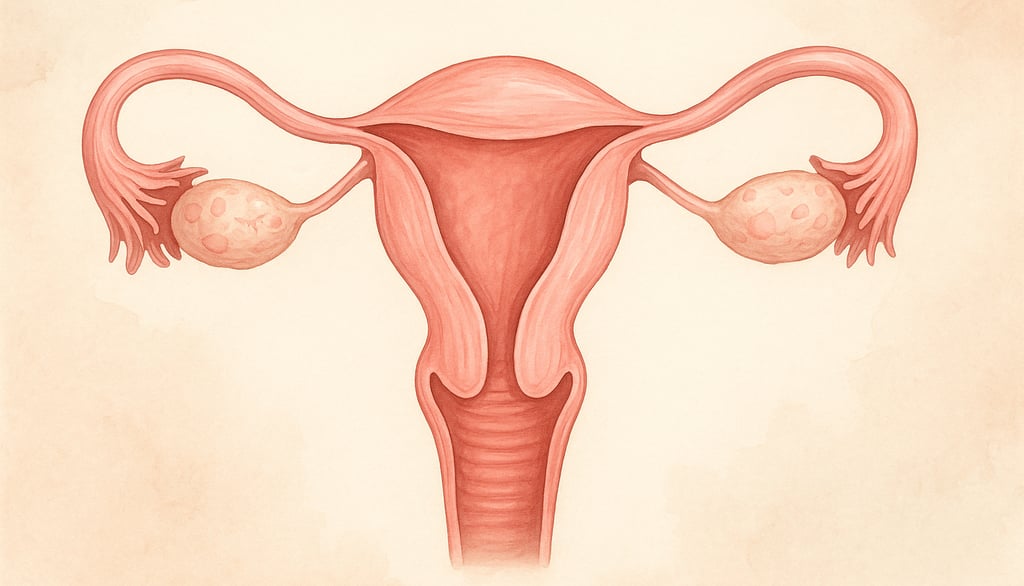Blocked Fallopian Tubes: Causes, Diagnosis, and What It Means for IVF
Learn what causes blocked fallopian tubes, how they’re diagnosed (like HSG), and why IVF is often the most effective treatment option.
DIAGNOSIS & TESTING


When you're trying to conceive and things aren’t going as expected, a common — but often silent — issue is blocked fallopian tubes. It’s something you can’t see or feel, but it can stand in the way of natural conception. Let’s break down what blocked tubes really mean, how they're diagnosed, and why IVF is often the most effective way forward.
What Are Fallopian Tubes and Why Do They Matter?
Fallopian tubes are two slender tubes that connect your ovaries to your uterus. Their job? To catch an egg after ovulation, provide the site for fertilisation (where sperm and egg meet), and carry the resulting embryo to the uterus.
If one or both tubes are blocked, this process can’t happen naturally. It’s like a road closure on the only path to your destination.
What Causes Blocked Fallopian Tubes?
There are several reasons your tubes might be blocked or damaged, including:
Pelvic inflammatory disease (PID): Often due to STIs like chlamydia or gonorrhoea.
Endometriosis: Tissue from the uterus grows outside it, causing inflammation and scarring.
Previous abdominal or pelvic surgery: Scar tissue (adhesions) can form.
Hydrosalpinx: A specific type of blockage where the tube fills with fluid.
Ectopic pregnancy history: A past tubal pregnancy can leave damage.
Many people with blocked tubes have no symptoms at all — it’s usually only discovered during fertility testing.
How Are Blocked Tubes Diagnosed?
The most common way to find out if your fallopian tubes are blocked is through a test called an HSG (hysterosalpingogram).
What is an HSG?
It’s a special X-ray done during the first half of your menstrual cycle.
A dye is passed through your cervix and into your uterus and tubes.
X-rays track the flow — if the dye doesn’t pass through the tubes, a blockage is suspected.
Other tests might include:
HyCoSy (hysterosalpingo-contrast sonography): Uses ultrasound and a contrast fluid.
Laparoscopy: A keyhole surgical procedure, sometimes used if endometriosis is suspected or if the diagnosis is unclear.
Can Blocked Tubes Be Treated?
It depends on the type, location, and severity of the blockage.
Surgery can sometimes open blocked tubes, but results vary and depend on how damaged they are.
In cases like hydrosalpinx, surgery might involve removing the tube altogether — as the toxic fluid inside can harm IVF success.
But for many, especially when both tubes are blocked or damaged, IVF offers the best chance of success.
Why IVF Bypasses the Tubes
IVF (in vitro fertilisation) doesn’t rely on your fallopian tubes at all. That’s part of why it’s so powerful in cases of tubal factor infertility.
Here’s how IVF bypasses the issue:
Eggs are collected directly from your ovaries.
Fertilisation happens outside your body in a lab.
Embryos are placed directly into the uterus — no need for the fallopian tubes.
For many, IVF is not only the fastest, but the most effective path forward after a blocked tube diagnosis.
Your Emotional Journey Matters Too
A diagnosis of blocked fallopian tubes can be frustrating, especially if you’ve had no symptoms and were hoping for natural conception. It can feel like something has been taken out of your hands — but it’s also the start of getting answers and taking control.
Whether you’re just beginning testing or already talking about IVF, know this: you are not alone, and there are clear paths forward.
© 2025. All rights reserved.
